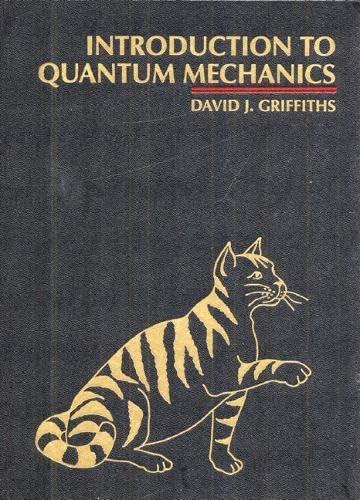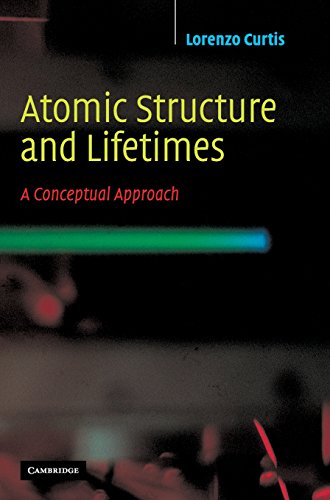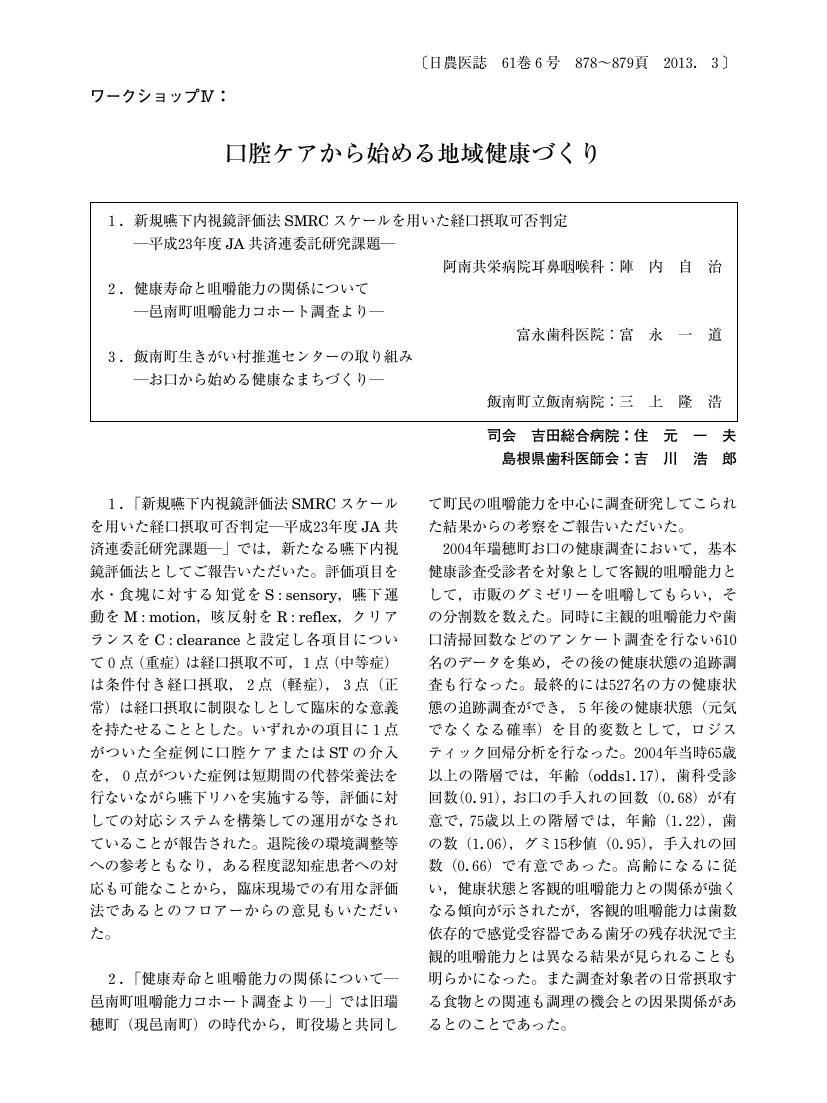1 0 0 0 施帯文石(亀石)展開図作成と考察
- 著者
- 臼井 洋輔
- 出版者
- 吉備国際大学文化財総合研究センター
- 雑誌
- 文化財情報学研究 (ISSN:13491628)
- 巻号頁・発行日
- no.8, pp.1-10,図巻頭1p,折り込み1枚, 2011-03
- 著者
- 小池 直人
- 出版者
- 大月書店
- 雑誌
- 唯物論研究年誌 (ISSN:13437372)
- 巻号頁・発行日
- no.18, pp.67-93, 2013-10
- 著者
- ペーダセン オヴェ・K. 小池 直人
- 出版者
- 社会文化学会
- 雑誌
- 社会文化研究
- 巻号頁・発行日
- no.1, pp.78-92, 1997-12
- 著者
- K・ペーダセン オヴェ 小池 直人
- 出版者
- 社会文化学会
- 雑誌
- 社会文化研究 (ISSN:18842097)
- 巻号頁・発行日
- vol.1, pp.78-92, 1997
1 0 0 0 OA 波浪外乱予測に基づく全没型水中翼船の縦運動制御システムに関する研究
- 著者
- 金 相賢 大和 裕幸
- 出版者
- The Japan Society of Naval Architects and Ocean Engineers
- 雑誌
- 日本造船学会論文集 (ISSN:05148499)
- 巻号頁・発行日
- vol.2000, no.188, pp.211-223, 2000 (Released:2009-09-16)
- 参考文献数
- 12
In this paper, the longitudinal control system for full-submerged hydrofoil based on wave prediction was proposed to exclude human operation and to improve the performance of contouring waves. The proposed control system consists of optimal preview servo system, Kalman filter and generation of future reference input and future wave disturbance.In the proposed control system, the wave disturbance and the wave elevation were filtered and predicted by using sensor signals, Kalman filter, 30th linear prediction model and the augmented system. Then the future reference input and the future wave disturbance were generated by using predicted wave disturbance and wave elevation, and were used to calculate the feedforward control input in the optimal preview servo system. And also the future reference was modified based on the significant wave height for ship height control.The simulation results show that the proposed control system has good performance of contouring waves in the follow sea and the hydrofoil regulates heave and pitch motion in low significant wave height and contours the waves in high significant wave height without human operation. And also the experiment was performed to confirm the algorithm of filtering of wave disturbance and hydrofoil motion, and calculation of wave elevation.
1 0 0 0 OA 甲府市水源林の形成過程
- 著者
- 泉 桂子
- 出版者
- 東京大学大学院農学生命科学研究科附属演習林
- 雑誌
- 東京大学農学部演習林報告 (ISSN:03716007)
- 巻号頁・発行日
- vol.103, pp.21-106, 2000
近年,森林の公益的機能に対する一般の関心が高まりつつある。特に森林の水源かん養機能は森林管理とも密接に関係している。筆者は既に東京都水源林及び横浜市道志水源かん養林を対象とした経営計画の変遷,東京都水源林の形成過程を明らかにしてきた。今回は,山梨県甲府市により水道水源かん養のために所有・管理されている甲府市水源林(昭和22(1947)年経営開始)を対象として取り上げた。水源林問題は河川をめぐる上下流の相互関係とも捉えられ,水源林経営問題の解明に当たってはこの上下流の関係成立過程が極めて重要な意味を持つ。そこで本研究では,甲府市水源林の経営前史における上下流の相互関係について明らかにすることを目的とした。分析に当たっては(1)上下流対立の発生と解消過程(2)森林の所有と利用の変遷(3)当時の森林経営計画の3点に着目した。
1 0 0 0 OA 小鳥の飼ひ方 : 食用鳩・文鳥・セキセイ・カナリヤ・十姉妹
- 著者
- 東京流行小鳥研究会 編著
- 出版者
- 平和堂書院
- 巻号頁・発行日
- 1928
- 著者
- David J. Griffiths
- 出版者
- Prentice Hall
- 巻号頁・発行日
- 1995
- 著者
- Lorenzo J. Curtis
- 出版者
- Cambridge University Press
- 巻号頁・発行日
- 2003
1 0 0 0 OA 口腔ケアから始める地域健康づくり
- 出版者
- 一般社団法人 日本農村医学会
- 雑誌
- 日本農村医学会雑誌 (ISSN:04682513)
- 巻号頁・発行日
- vol.61, no.6, pp.878-879, 2013 (Released:2013-07-23)
- 著者
- 小林 文男
- 出版者
- 谷沢書房
- 雑誌
- 月刊状況と主体 (ISSN:03882063)
- 巻号頁・発行日
- no.272, pp.41-54, 1998-08
1 0 0 0 OA ヒト睾丸温度の研究
- 著者
- 北山 太一
- 出版者
- 泌尿器科紀要刊行会
- 雑誌
- 泌尿器科紀要 (ISSN:00181994)
- 巻号頁・発行日
- vol.11, no.6, pp.435-465, 1965-06
In 141 male urological patients, age ranged from 10 t o 76 years old, temperature of rectum, testicle, scrotal cavity and external inguinal ring region was measured by means of a hypodermic needle with a thermistor device. The patients were in operation room, kept quitely at supine position, mainly under spinal or general anesthesia, and their trunk and lower extremities were draped with cotton sheet but the external genital area was exposed to air. Room temperature was recorded at the same time with a mercury thermometer. Statistical analysis was made on records of every area. Out of the 141 cases studied, 111 cases were considered to be normal testicular group since their illnesses were not supposed to have effect directly on testicular temperature, and the remaining 30 cases were tentatively classified as abnomal testicular group because their illnesses originated in or around the testicle with possibility that the illness gave direct influence on testicular temperature. I. Normal testicular group : (1) Normothermic group (incl uding 83 cases in which rectal temperature ranged between 36.2 and 37.6°C) demonstrated that their rectal temperature was 37.0±0.05°C, testicular temperature 33.1±0.12°C in the right side and 33.2±0.13°C in the left, scrotal cavity temperature 32.6±0.12°C in the right and 32.6±0.12°C in the left and external inguinal ring region temperature 34.7±0.10°C in the right and 34.8±0.09°C in the left. Hyperthermic group (consists of 18 patients whose rectal temperat u re was above 37.7°C) showed that their rectal temperature was 38.2±0.10°C, testicular temperature 34.5±0.28°C in the right and 34.5±0.27°C in the left, scrotal cavity temperature 34.0±0.26°C in the right and 33.9+0.26°C in the left and external inguinal ring region temperature 35.8±0.18°C in the right and 35.8±0.21°C in the left. Hypothermic group (consists o f 10 cases in which rectal temperature was below 36.1°C) gave results of rectal temperature being 35.8±0.06°C, testicular temperature 32.3±0.20°C in the right and 32.3±0.18°C in the left, scrotal cavity temperature 31.8±0.17°C in the right and 31.8±0.18°C in the left and external inguinal ring region temperature 33.6±0.18°C in the right and 33.6±0.18°C in the left. (2) Between the normothermic and hyperthermic groups, average differences in temperature of rectum, testicle, scrotal cavity and external inguinal ring region were found to be 1.19°C, 1.40-4.30°C, 1.34-1.31°C and 1.14-X1.05°C respectively. Between the normothermic and hypothermic groups, they were 1.15°C, 0.86-0.87°C, 0.87-0.83°C and 1.12-1.18°C respectively. Between the hyperthermic and hypothermic group, they were 2.34°C, 2.26— 2.17°C, 2.16-2.14°C and 2.26-2.23°C respectively. These difference were statistically significant at the level of the risk below 1 %. (3) In every, groups, average differe nces between the right and left testicular temperature, between the right and left scrotal cavity temperature and between the right and left external inguinal ring region temperature were all found to be less than 0.14°C and statistically not significant at all. (4) In the normothermic, hyperthermic and hypothermic groups, differences in temperature between rectum and testicle were 3.8-3.9±0.11°C, 3.7±0.28~0.29°C and 3.5±0.17-0.19°C respectively, between rectum and scrotal cavity, were 4.4±0.11°C, 4.2~4.3±0.26-0.27°C and 4.0±0.16-0.19°C respectively, between rectum and external inguinal ring region, were 2. 32.2±0.08-0.09°C, 2.4±0.16-0.20°C and 2.2±0.19~0.20°C respectively, between testicle and scrotal cavity, were 0.5-0.6±0.04°C, 0.5-0.6±0.11-0.08°C and 0.5-0.6±0.11--0.13°C respectively, between external inguinal ring region and testicle, were 1.6±0.08-0.09°C, 1.3±0.21 —0.16°C and 1.3±0.24-0.20°C respectively, while between external inguinal ring reg ion and scrotal cavity, were 2.1-2.2±0.09°C, 1.8-1.9±0.18-0.17°C and 1.8±0.17-0.16°C respectively. These figures are statistically significant at the level of risk below 0.1 % except the difference between testicular and scrotal cavity temperature. (5) In the normothermic group, average dif ference in temperature of rectum, testicle, scrotal cavity and external inguinal ring region between the age groups of 10 to 20 years and 30 to 40 years was 0.16-0.45°C which was not statistically significant. On the contrary, average differences in temperature of rectum, testicle, scrotal cavity and external inguinal ring region between the age groups of 10 to 20 and above 50 years were 0.38°C, 0.99-1.17°C, 0.80-0.79°C and 0.87,-0.79°C respectively, and between the age groups of 30 to 4 0 and above 50 years, were 0.38°C, 0.58-0.72°C, 0.62-0.55°C and 0.71-0.58°C respectively. These figures indicated that temperatures of these areas are lower in the advanced age groups than younger groups and showed statistically significant differences at the level of risk below 5 %. (6) In 111 cases, correlativities were determined between room temperature a nd rectal and scrotal cavity temperatures, rectal and testicular temperatures, scrotal cavity and and external inguinal ring region temperatures and testicular and scrotal cavity temperatures. The results showed almost complete positive correlation between testicular and scrotal cavity temperatures, moderately positive correlations between scrotal cavity and room temperatures and between scrotal cavity and rectal temperatures, but almost no correlation between rectal and room temperatures. (7) In 10 cases, of whic h age ranged from 28 to 75 years, the exposed external genital area was entirely draped with cotton sheet. The testicular temperature has risen, from the mean of initial temperature of 32.7°C (30.8-33.9°C), up to the mean of 34.3°C (32.4-35.9°C) in about 20 minutes after the draping. Removal of the sheet made the testicular temperature descended down to the mean of 32.6°C (31.0-33.8°C) in about 20 minutes. During these procedures, rectal temperature altered from the mean of 37.1°C (35.5-39.1°C) to 36.9°C (35.4-39.0°C). This experiment confirmed that testicular temperature will be varie d at the mean range of 1.6°C (0.8-2.3°C) by draping or exposing the external genital area. II. Abnormal testicular group (tentatively called) : (1) In 8 cases of chronic epididymal tuberculosis, no statistically significant difference in temperatures at every area tested from that of normal testicular group was demonstrated. This disease, therefore, was thought to have no effect on testicular temperature . (2) In 8 cryptorchid cases (testis located in the inguinal canal), the rectal, testicular, scrotal cavity and external inguinal ring region temperatures were 37.3±0.07°C, 35.7± 0.36°C, 34.9±0.18°C and 35.1±0.08°C respectively in 6 testes of the normothermic group and 38.1±0.26°C, 36.9±0.40°C, 36.1±0.26°C and 36.2±0.26°C respectively in 2 cases of the hyperthermic group. In each group, the testicular temperature was 2.6-2.4°C higher than that of in normal testicular group. This difference was found to be statistically significant. (3) In 3 cases of left spermatic varicocele, all of which belonged to hyperthermi c group, the temperatures of various areas tested have not differed from that of in normal testicular group. (4) In a case of left embryonal cancer (hen's egg-sized), only the tumor-bearing testis showed higher temperature, 36.3°C, than normal group, but the other areas tested showed similar temperature as that of normal testicular group. In a case of right teratoma (human fist-sized), however, the temperatures of not only the tumor-bearing testis but of the other healthy testis and scrotal cavity were higher than that of normal testicular group. Same phenomenon were seen in a case of left intra-scrotal hematoma. (5) In 3 cases of hydrocele, 2 cases of spermatocele, 2 cases of testicular atrophy and a case of aplasia of spermatic duct, the temperatures of all areas tested were not statistically different from that of normal testicular group.
1 0 0 0 統計実務におけるレンジチェックのための外れ値検出方法
- 著者
- 野呂 竜夫 和田 かず美
- 出版者
- 総務省統計研修所
- 雑誌
- 統計研究彙報 = Research memoir of the statistics (ISSN:13489976)
- 巻号頁・発行日
- no.72, pp.41-53, 2015-03
1 0 0 0 IR 日本版PILの妥当性,信頼性の検討
- 著者
- 佐藤 文子 山口 浩 斎藤 俊一
- 出版者
- 岩手大学
- 雑誌
- Artes liberales (ISSN:03854183)
- 巻号頁・発行日
- vol.52, pp.85-97, 1993-06
- 被引用文献数
- 1
- 著者
- 鈴木 昇一
- 出版者
- 公益社団法人日本放射線技術学会
- 雑誌
- 日本放射線技術学会医療情報分科会雑誌
- 巻号頁・発行日
- no.23, pp.19-20, 2014-10-01
- 著者
- Inna Martha Rumainum Kanjana Worarad Yoshikazu Yamaki Kenji Yamane
- 出版者
- 一般社団法人 園芸学会
- 雑誌
- The Horticulture Journal (ISSN:21890102)
- 巻号頁・発行日
- pp.MI-077, (Released:2015-11-21)
- 被引用文献数
- 7
A red-fleshed peach (Prunus persica L. Batsch ‘Tenshin Suimitsuto’; ‘Tianjinshuimi’ in Chinese) was used to study the mechanisms of skin and flesh pigmentation. Anthocyanin accumulation was detected at the pre-endocarp-hardening and maturation stages in skin, while it appeared from maturation stage in flesh. The flesh at harvest stage contained approximately 1.1 mg·g−1 FW of anthocyanin. In contrast, flavonoid and phenolic compounds were found in all stages. The final phenolics concentration was 1.6 mg·g−1 FW. To study the effects of light, fruits were on-tree bagged in double-layered paper bags. The total anthocyanin content in the skin was significantly lowered by bagging, but not in the flesh. This suggested that flesh tissue pigmentation was less sensitive to light intensity than that of skin tissue, and thus, anthocyanin accumulation in flesh occurred even under low light conditions. Dark treatments, such as triple-layered paper bagging, significantly reduced anthocyanin and phenolic concentrations in the skin and flesh. A combined treatment of darkness and an auxin polar transport inhibitor, 2,3,5-triiodobenzoic acid (TIBA), had no effect on anthocyanin concentration in skin and flesh. However, total flavonoids in the skin was increased by TIBA treatments under darkness. Factors affecting anthocyanin accumulation in the flesh tissue are discussed.
1 0 0 0 OA 読むことにおける身体性の問題 : 「身読」を手がかりに
- 著者
- 小室 弘毅
- 出版者
- 東京大学大学院教育学研究科
- 雑誌
- 東京大学大学院教育学研究科紀要 (ISSN:13421050)
- 巻号頁・発行日
- vol.43, pp.25-34, 2004-03-10
The purpose of this paper is to clarify the possibility of body in reading by examining "Shindoku". First, we must examine the concept "Mi (body)" in Japanese and clarify the function of "Mi (body)". "Mi (body)" can synchronize with another "Mi (body)". And this is why "Shindoku" can be possible. Second, we would examine "Shindoku" as a method. "Shindoku" is classified into two. One is "reading with body" and the other is "reading to body". The method of "reading with body" contains "reading with hand", "reading with mouth" and "reading by getting body ready". Michio Namekawa, a pioneer of reading education in Japan, told that we need concentration in "reading by getting body ready" in order to get reading more effectively and deeply. Kakichi Kadowaki, a Christian, told that he could read Bible more deeply by practicing "Zen". We must walk the same way with all our body and soul as the author walked in order to "read to body". If we read a book as a purpose of "Shindoku", we should not receive the book as only written sentences but we should receive what the author says as his own experience. And we should take the author's problem as our own problem. From the viewpoint of "Shindoku", we can see the problem of practice and posture in reading.



